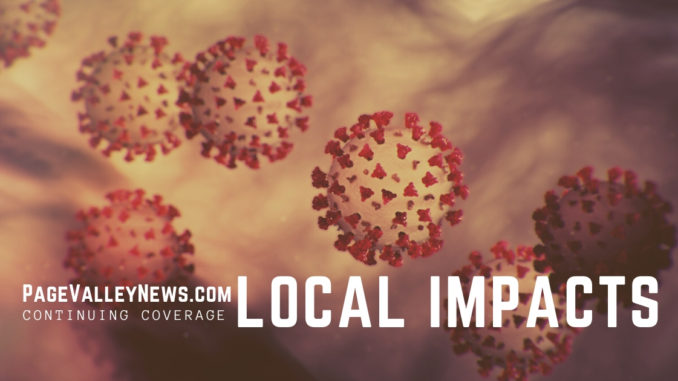
~ Press release issued by Valley Health
WINCHESTER, Oct. 3 — Valley Health, like health systems nationwide, is confronting financial challenges from the COVID-19 pandemic. While social restrictions have eased considerably, and serious illness and death rates are down, the lasting impacts are still significant at the region’s nonprofit health system.
“I’m so proud of our team for their extraordinary dedication to care for the community and each other during this public health crisis,” said Valley Health President and CEO Mark Nantz.
“We’ve truly lived our values of compassion, integrity, collaboration, courage, innovation and excellence, and have been a steadfast health resource for our region,” Nantz continued. “Despite our best efforts, however, we face unprecedented financial challenges as the effects and after-effects of the pandemic continue to take their toll. Since 2020, Valley Health has seen an overall drop in health care utilization, sicker patients due to deferred care, staffing shortages, and higher costs of goods and services.”
Recent reports from the American Hospital Association (AHA) examine the intense financial pressures facing hospitals and health systems:
• One study predicts losses in the billions of dollars this year for U.S. hospitals, with margins that will be at least one third lower than pre-pandemic levels and will have more than half of the nation’s hospitals operating in the red.
• A record number of rural hospitals closed their doors in 2020; those remaining face unique financial and workforce pressures moving forward.
• Deferred care during the pandemic has led to increased patient acuity in America’s hospitals, which means hospitalized patients are sicker and more costly to treat.
• In an April report, the AHA looked at increased costs driven by a spike in labor costs of about 20 percent over the last two years.
Left unaddressed, these financial challenges have the potential to jeopardize access to essential health care services for patients.
“Valley Health is not in danger of closing its doors,” Nantz said. “But the pandemic and its aftereffects have continued to create financial challenges for our organization.”
Valley Health, like every health system across the nation, experienced high turnover rates among a COVID-weary staff, as well as national nursing shortages, leaving more than 800 open positions across the organization, and driving labor costs to an all-time high.
To address its financial challenges, Valley Health has secured $126 million through assistance programs such as the federal CARES Act, the Virginia Department of Medical Assistance Services and the Federal Emergency Management Agency. Were it not for that assistance over the last two and a half years, Valley Health would have experienced operating losses in excess of $100 million.
“COVID-19 forced us to curtail or temporarily discontinue many of the services we budget and staff for across our system,” explained Nantz.
“Federal funds helped partially offset revenue loss associated with the pandemic, as well as increased overhead costs due to supply chain issues and skyrocketing costs of supplemental staff,” Nantz continued. “But that support has dried up and we have not yet returned to our pre-pandemic levels of diagnostic testing, wellness care and screenings, and elective surgeries.”
With no prospects for further government assistance, the health system has been taking steps including:
• Investing in training and retaining the best healthcare workforce and decreasing reliance on agency staff.
• Assuring health insurers are paying fairly, with rate increases that reflect actual rising cost of care, especially as insurance companies experience record profits while healthcare systems are experiencing record losses. Valley Health cannot do business with organizations that will not compensate fairly for services provided.
• Reviewing and evaluating all Valley Health programs and services to ensure the best stewardship of community healthcare dollars and deploying caregivers to the most necessary roles.
“We are methodically assessing all parts of our organization, re-evaluating how, where and when we provide services and exploring new ways to deploy our staffing so that we can continue to be our region’s care provider and employer of choice well into the future,” said Nantz.
Valley Health is a nonprofit health system serving a population of more than 500,000 in the Northern Shenandoah Valley of Virginia, the Eastern Panhandle and Potomac Highlands of West Virginia, and western Maryland. The system includes six hospitals, more than 70 medical practices and Urgent Care centers, outpatient rehabilitation and fitness, medical transport, long-term care, and home health.
•••
RELATED ARTICLES
Page Memorial’s $1 million USDA grant will help address rural health challenges
Page County not reporting rising COVID numbers like more populated parts of Virginia
97% of Valley Health staff take vaccine or receive exemption
Valley Health says expanded testing ‘deal changer’ for handling pandemic



Be the first to comment